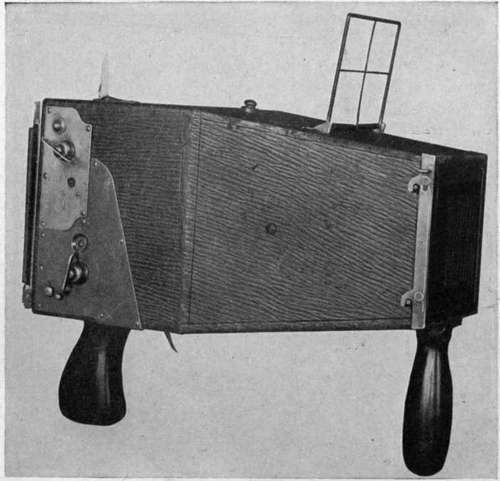Essential Characteristics
Description
This section is from the book "Airplane Photography", by Herbert E. Ives. Also available from Amazon: Airplane photography.
Essential Characteristics
In addition to the general requirements as to lens, shutter and magazine, common to all aerial cameras, the hand camera must meet the special problems introduced by holding in the hands, especially over the top of the plane's cockpit. An exceptionally good system of handles or grips must be provided whereby the camera can be pointed when pictures are taken, and held while plates are being changed and the shutter set. The weight and balance of the camera must be correct within narrow limits; the wind resistance must be as small as possible; the shutter release must be arranged so as to give no jerk or tilt to the camera in exposing.
As to the method of holding the camera, a favorite at first among military men was the pistol grip, with a trigger shutter release (Fig. 37). Because of the size and weight of the camera the pistol grip alone was an inadequate means of support and additional handles on the side or bottom had to be provided for the left hand. Small (8X12 cm.) pistol grip cameras were used to some extent by the Germans (Fig. 42), and a number of 4X5 inch experimental cameras of this type were built for the American Air Service (Fig. 37). But the grasp obtained with such a design is not so good as is obtained with handles on each side or with flat straps to go over the hands. The camera balances best with the handles in the plane of the center of gravity. As to weight, no set.

Fig. 37. - Pistol-grip aerial hand camera.
Continue to:
- prev: Chapter VII. Hand-Held Cameras For Aerial Work. Field Of Use
- Table of Contents
- next: Representative Types Of Hand Held Cameras
Tags
camera, lens, airplane, aerial, film, exposure, photography, maps, birdseye
